Repotting Jade Plants: How To Do It & Soil The Mix To Use
Jade Plants are tough and attractive succulents that thrive in containers. I’ve grown them both indoors and outdoors and they’re as easy maintenance as it comes. This is all about repotting Jade Plants including when and how to do it as well as the best soil mix to use.
I grew many different Jade Plants in my garden (both in pots and in the ground) in Santa Barbara. Now that I live in Tucson, the few Jades I have grow in pots. The ones you readily find for sale, like the old standby Crassula ovata, do well as houseplants if you grow them in a moderate to high light location.
NOTE: I’m repotting my Variegated Jade Plant here. All the information in this post and video, including the steps taken and the mix to use, applies to all the many other types (species and varieties) of Jade Plants.
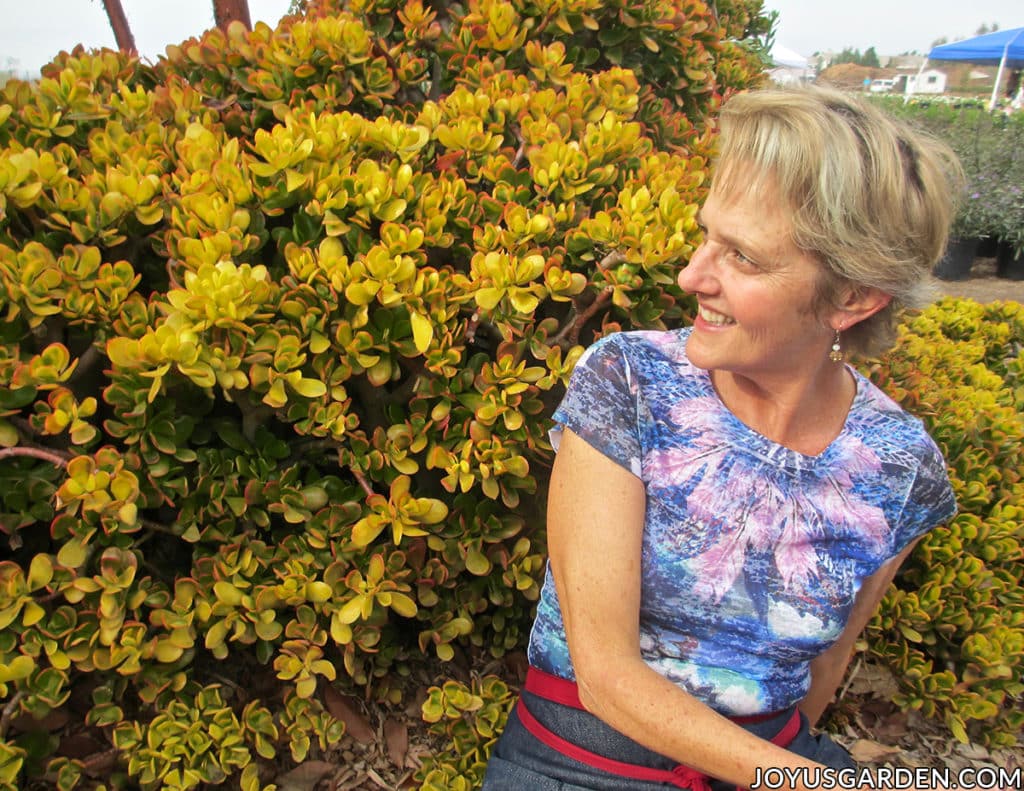
When to Repot Jade Plants
Spring, summer & into fall are the times for repotting Jade Plants. If you live in a climate where winter comes early, then spring & summer are best. Here in Tucson is fall mild – I repot up until the end of Oct. Avoid repotting in winter if you can because plants like to rest during this time.
HEAD’S UP: I’ve done this general guide to repotting plants geared for beginning gardeners which you’ll find helpful.
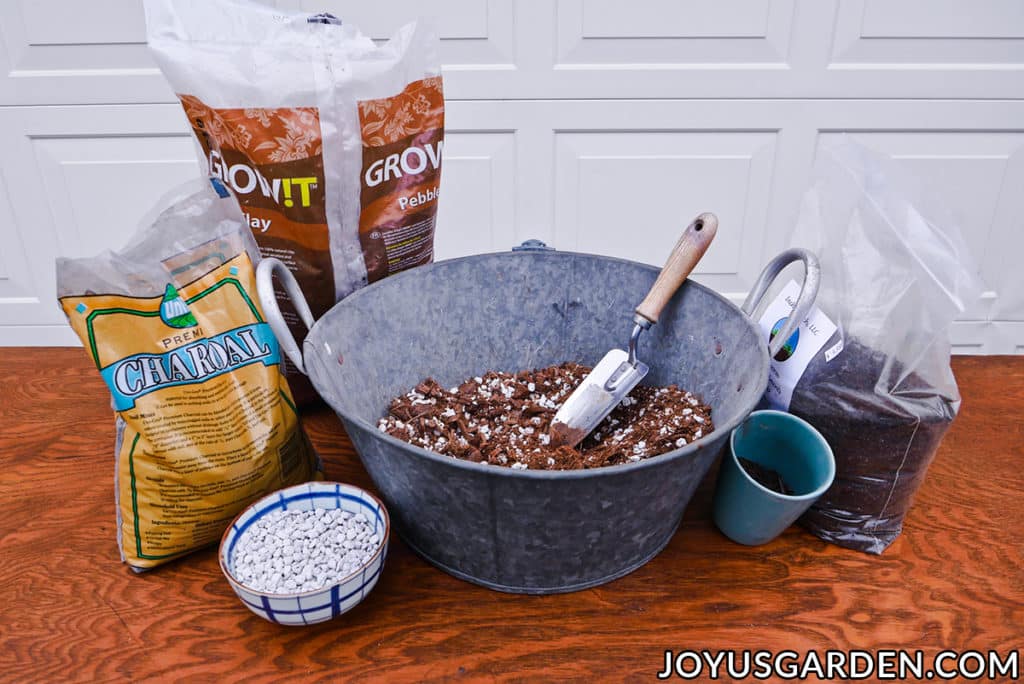
Soil Mix to Use When Repotting Jade Plants
Jade Plants are succulents, so a mix that is well-drained and aerated (the roots need to breathe) is necessary. You want the water to flow out freely so the mix and roots doesn’t stay too wet. The leaves and stems of Jades store water so the mix needs to dry out in between waterings.
I want to share this DIY succulent and cactus mix recipe with you. Because I have a lot of succulents, there’s always a batch of it mixed up and ready to go. There are a couple of options of mixes that you can buy below.
I directed planted my Variegated Jade into a ceramic container (love that jazzy copper/bronze pot!) with 1 drain hole. A plastic grow pot like the 1 below has multiple drain holes so the water drains out more readily.
Because of the 1 drain hole issue, I used a couple of other ingredients I normally wouldn’t have to ensure no water builds up at the bottom. I’ll list these in parentheses below because you may not need them.
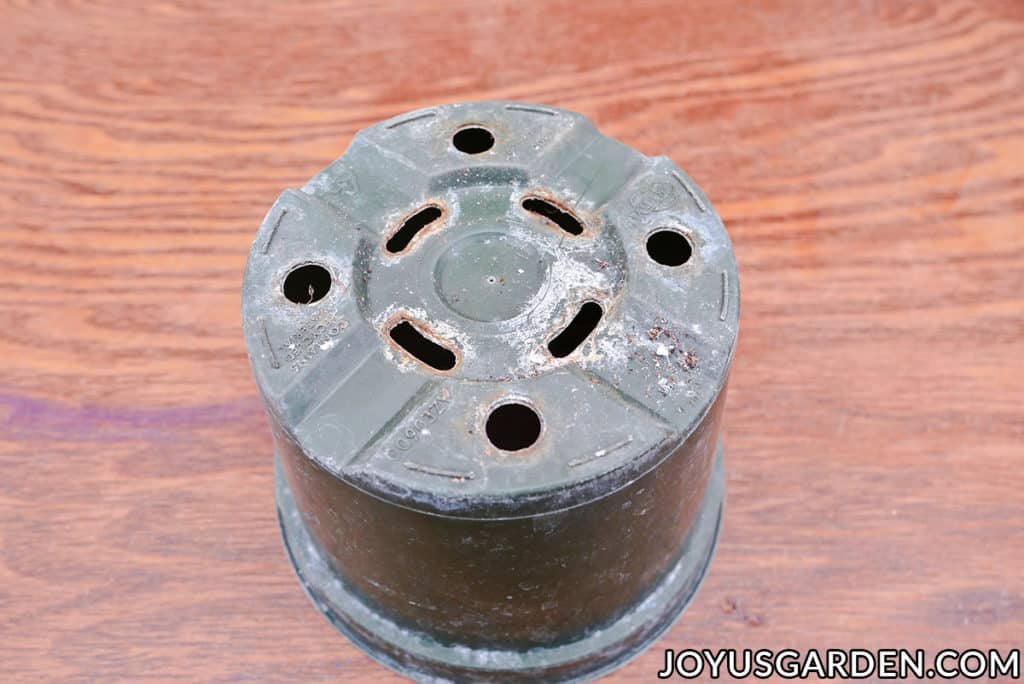
- (Clay pebbles). I placed a 1/2-1″ layer of these in the bottom of the pot.
- (Charcoal). This not only helps to improve the drainage, but it absorbs impurities & odors. This a big plus because the plant is directly planted in the ceramic.
- Succulent & cactus mix. Here’s a good option as well as this more economical one.
- Pumice. I added in a handful of this because of the 1 drain hole issue. If you buy a succulent & cactus mix & it looks heavy & not well aerated, add in a handful or 2 of pumice or perlite to up the ante on the drainage & aeration factors.
- Worm compost & compost. I added a bit of these in for natural nourishment. You can see the amounts I added in the video. Here’s how I naturally feed my houseplants with this combo.
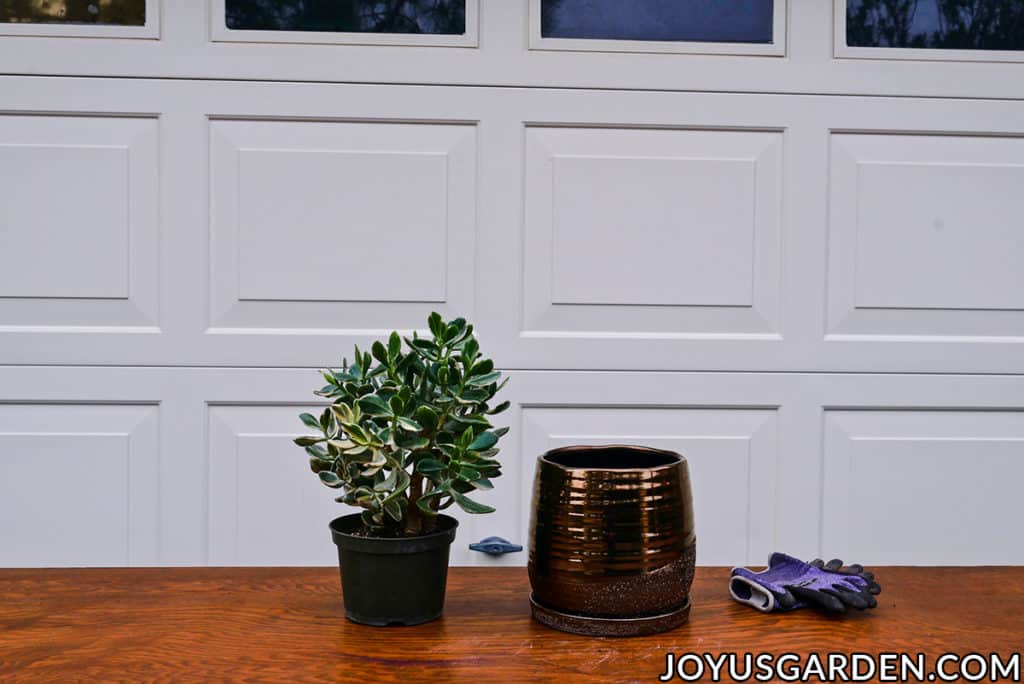
What Type of Pot to Use
I’ve found that the type of pot doesn’t matter when it comes to repotting Jade Plants. Jades do well in grow pots, terra cotta, fiberglass, resin, concrete, or ceramics.
Steps to take
I watered the Jade about 14 days before the repotting. I generally like to keep succulents on the dry side when repotting them.
Loosen the rootball from the pot. I was easily able to get the plant out of the pot by pressing on the grow pot. It pulled right out. If your rootball is stubborn to come out, you can other methods of removal in this guide.
Fill the pot with the mix so that the top of the rootball is even with or slightly above the top of the pot. The mix is very light and the weight of the plant will cause it to gradually sink down a bit.
This is where I added in a couple of handfuls of compost.
Fill in with mix around the rootball. I compacted the mix by pressing down on it around the sides to get the heavy plant to stand up straight in the light mix. Add more mix if necessary.
I topped it with a 1/4″ layer of worm compost.
Some Of Our General Houseplant Guides For Your Reference:
- Guide To Watering Indoor Plants
- Beginner’s Guide To Repotting Plants
- 3 Ways To Successfully Fertilize Indoor Plants
- How to Clean Houseplants
- Winter Houseplant Care Guide
- Plant Humidity: How I Increase Humidity For Houseplants
- Buying Houseplants: 14 Tips For Indoor Gardening Newbies
- 11 Pet-Friendly Houseplants
Check out this video of me repotting my Jade Plant:
After Care
I’ll let my Jade Plant settle into the new soil mix for 7 days and keep it dry before watering. I put the plant back in the same bright location it was in where it receives plenty of natural light.
Jades, like most succulents, are very easy to care for. I’m thinking I’ll water this plant once a month in the warm months and every 2 months in the winter.
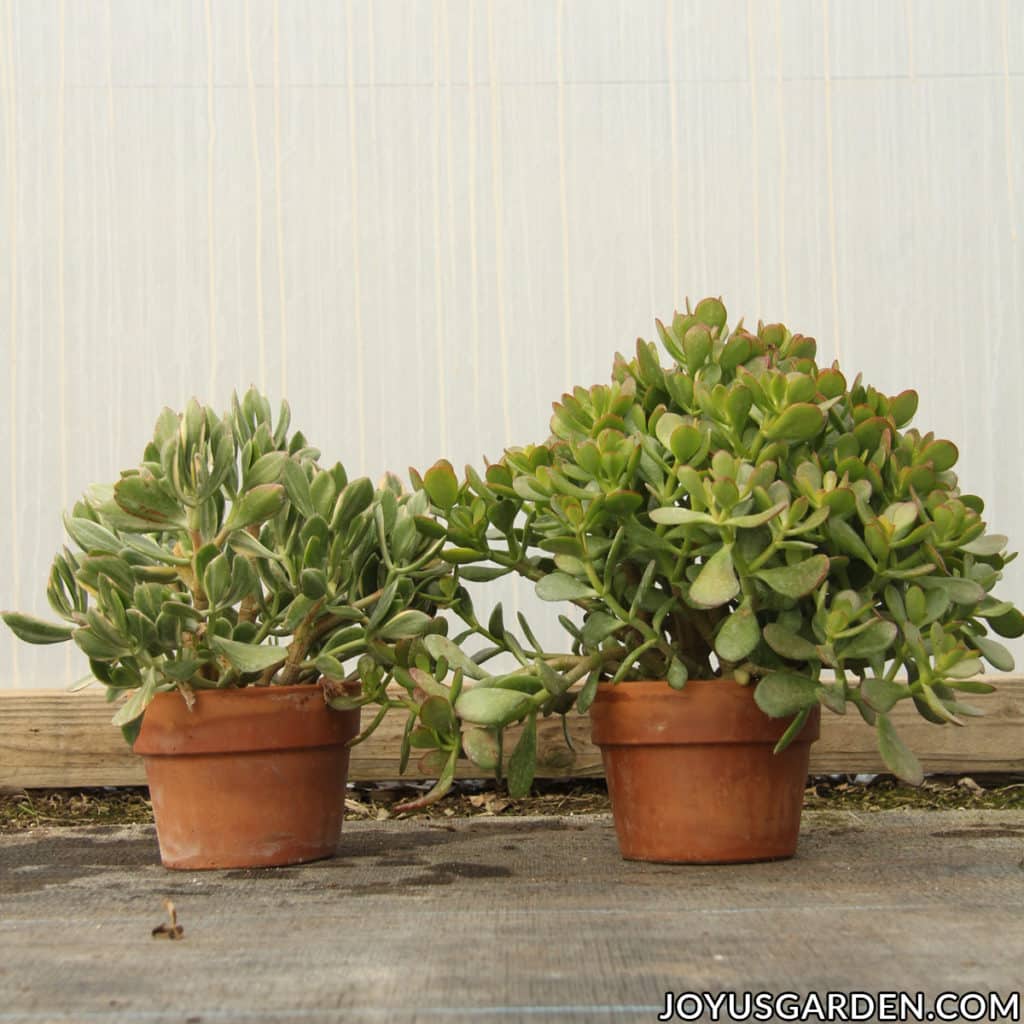
How Often Does a Jade Plant Need Repotting?
Jade Plants have a small, shallow root systems. They prefer a smaller pot and could easily be overwatered in a large pot with a lot of soil mass. As your Jade gets larger and heavier, it will need a “weighty” pot as a base. I’ve seen 3′ Jades in 16″ ceramic pots doing just fine.
Because of that smaller root system, Jades don’t need repotting very often. I won’t think of repotting the one you see here and in the video for 5 years. The root ball was small in portion to the size of the plant so it has plenty of room to grow.
In other words, don’t rush to repot your Jade Plant every year!
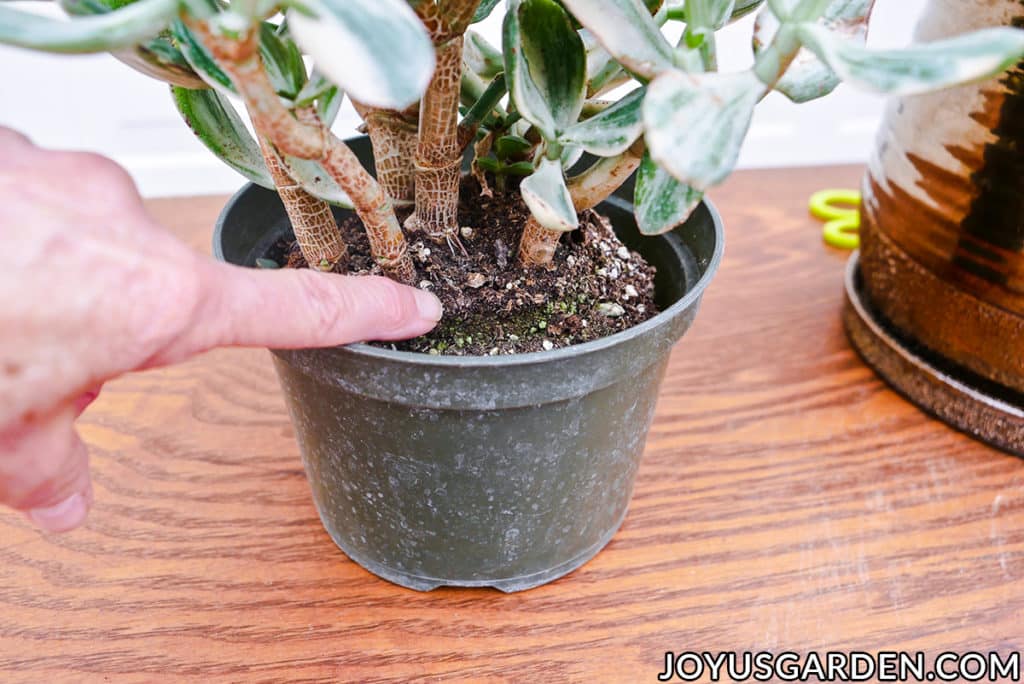
How to Repot a Large Jade Plant
One good thing to know: Large Jade Plants are HEAVY & can be awkward to handle because of their girth. They grow as wide as they do tall, so even a 2′ Jade is bulky & cumbersome to repot. And don’t forget, when you’re moving up to a larger pot you’re using more soil so that adds substantial weight too.
I had a large Jade in Santa Barbara and got someone to help me with the repotting process. Another set of hands not only helps you get it out of the pot but also to hold the heavy plant up straight in the light soil mix while you fill in with soil.
NOTE: Be careful as you work with this plant because the leaves and stems break off easily. You’re going to lose some in the process no matter how cautious you are. Another person helping you will prevent the plant from tipping over & causing too much breakage. Plus, it’s just plain easier with 2!
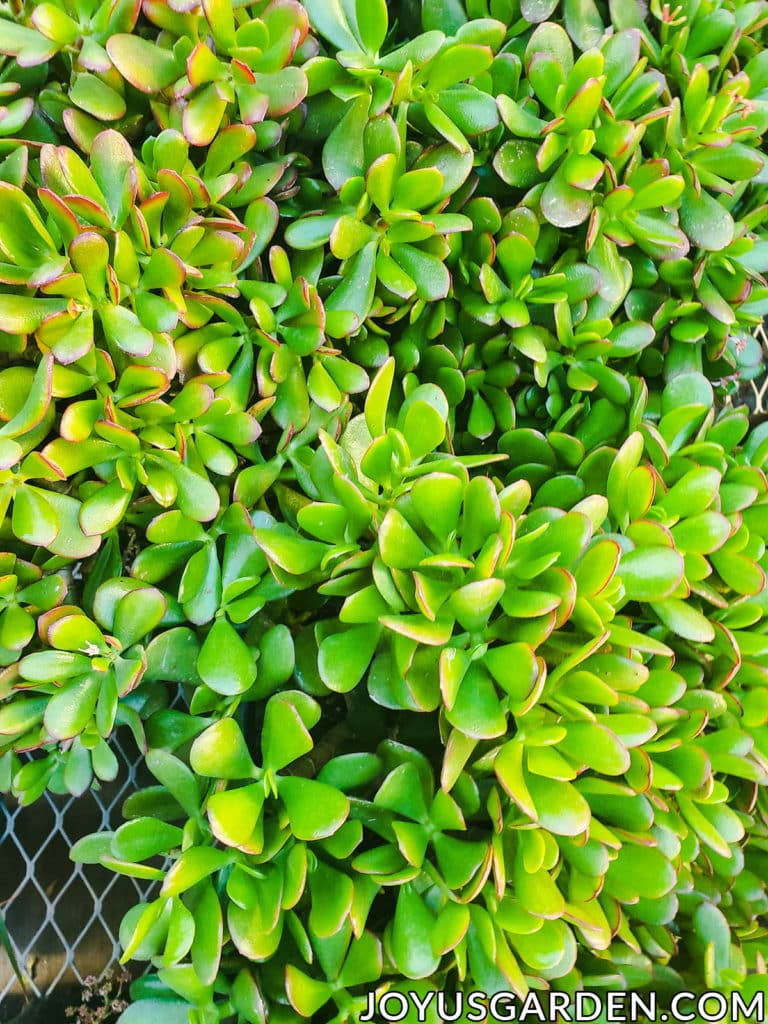
If you have plenty of light, are light-handed with the water and want an easy-care, fleshy leaved companion, then this plant is for you. And it’s good to know… Jade Plants are tough as nails and easy to repot!
Happy gardening,

Did you enjoy this guide? You may also enjoy these gardening tips!
- Jade Plant Care
- Aloe Vera Plant Care
- Repotting Portulacaria Afra (Elephant Bush)
- How to Plant and Water Succulents In Pots Without Drain Holes

This post may contain affiliate links, you can read our policies here.

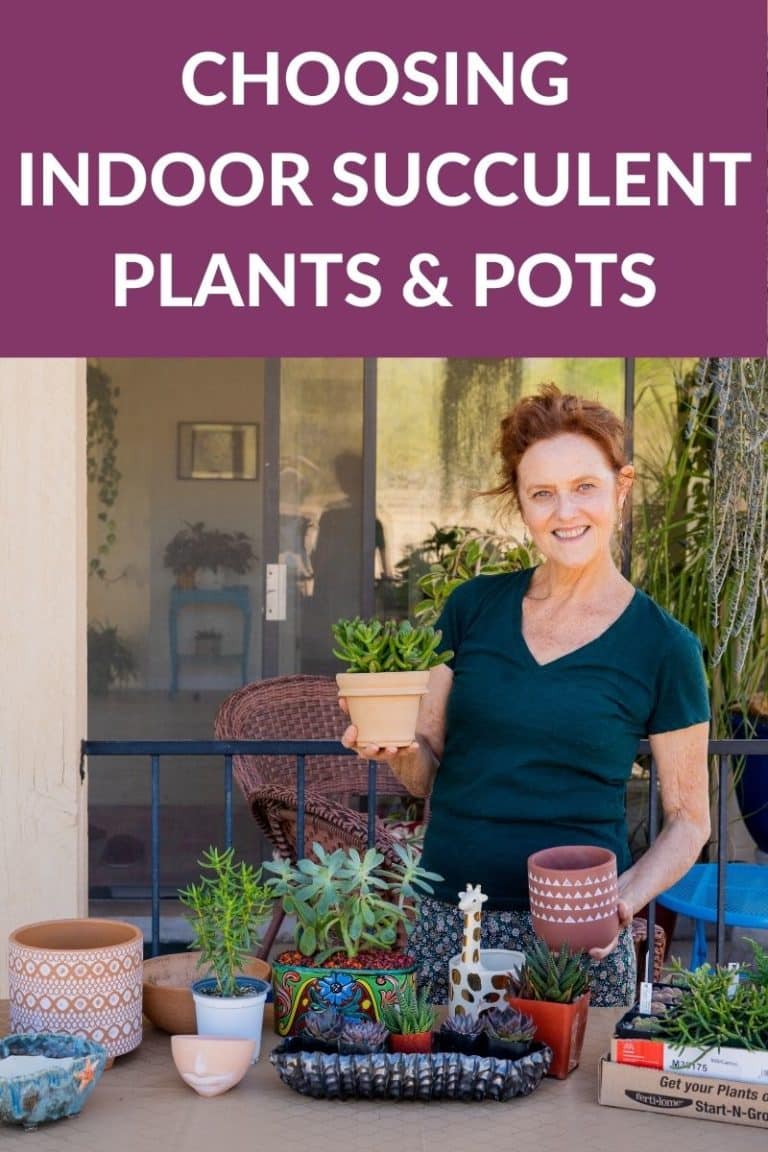
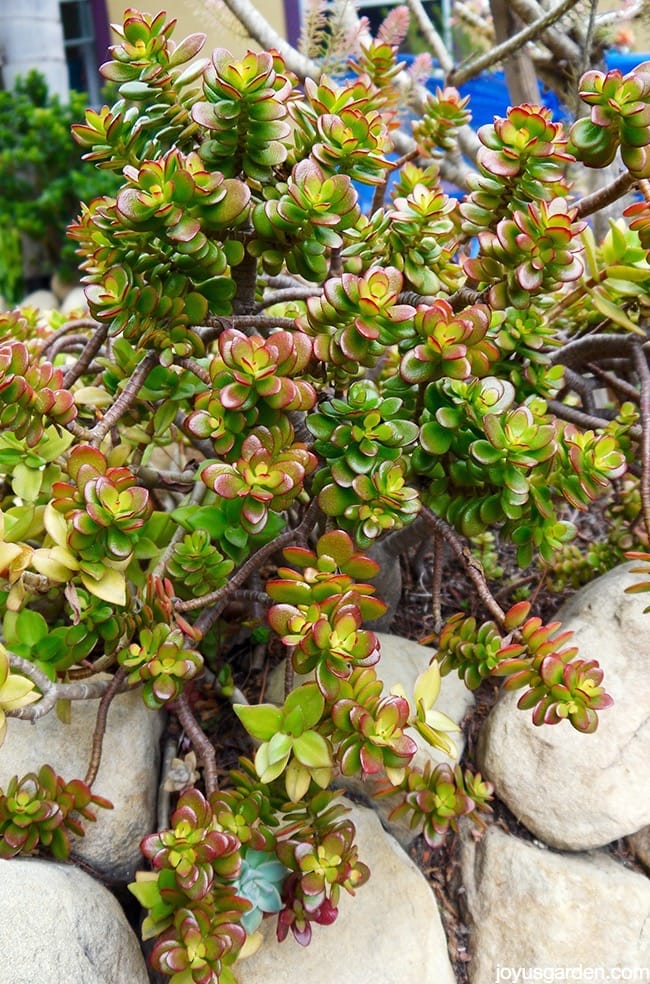
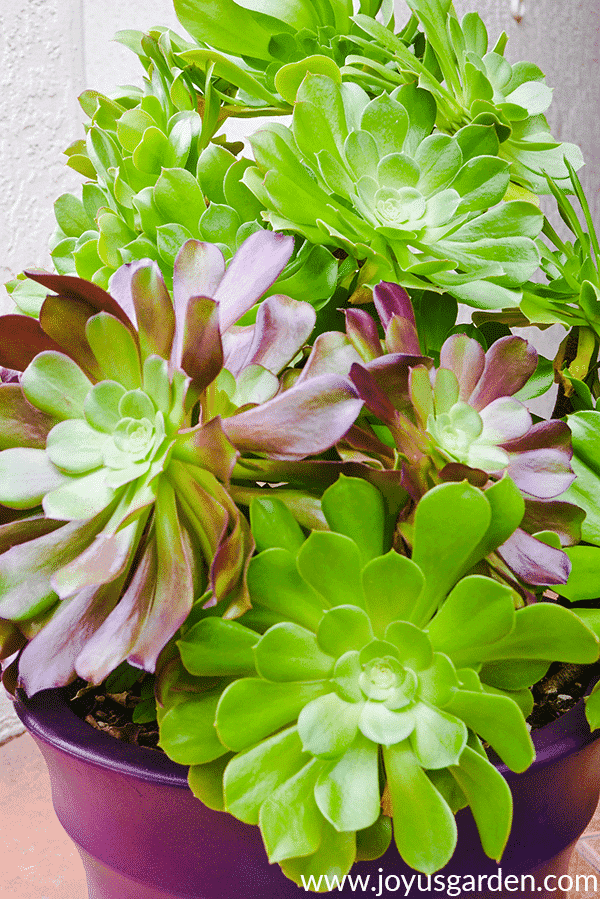
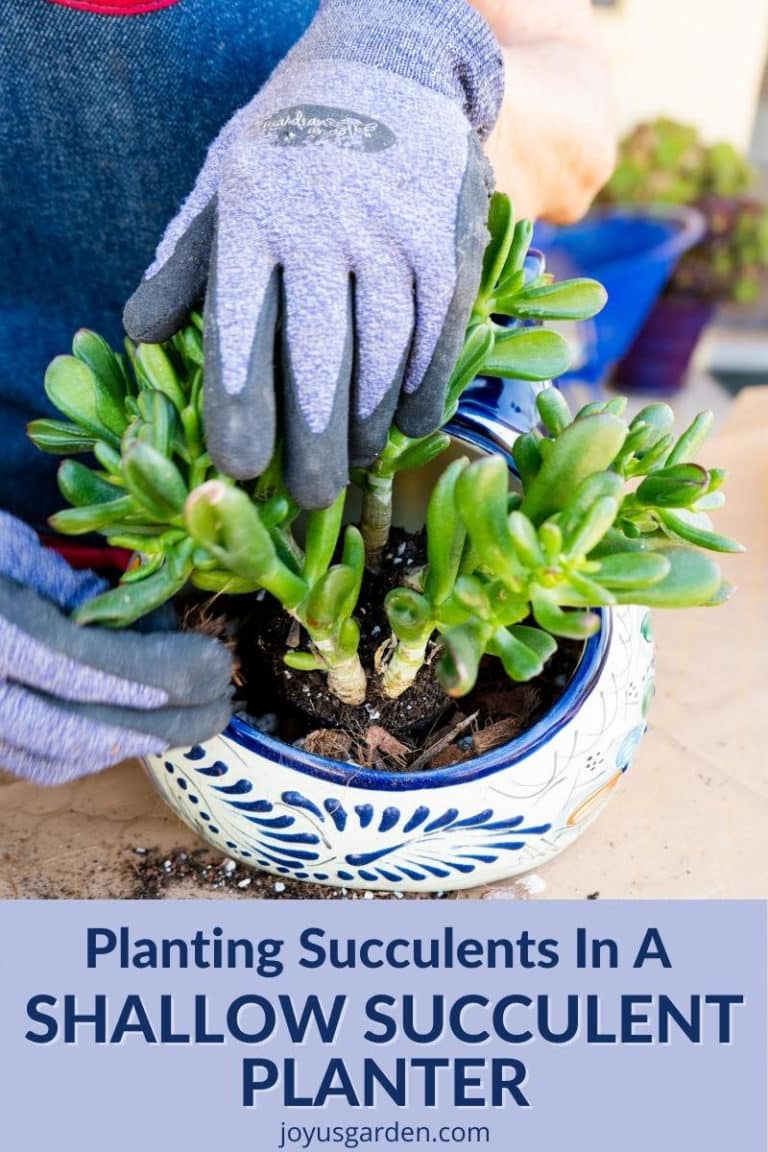

Lovlely planter .. may I ask the store where you bought the planter from?
Hi – Yes, it’s lovely. I bought it at Green things here in Tucson. Nell
Hello. I have an 11 year old jade plant thats been on the same pot for 3 years. I noticed some black spots on the leaves. Is it safe to report on october? I live on the midwest
Hi Han – I repot through October here in Tucson. Spring, summer into early fall are the best times. Do it soon. Nell
do not put gravel or “clay pebbles” on the bottom. it just raises the perched water table in your pot making root rot more of an issue.
it doesn’t make water drain more. it does the opposite.